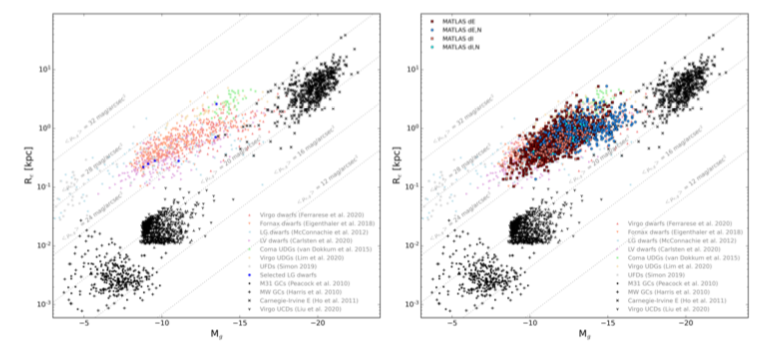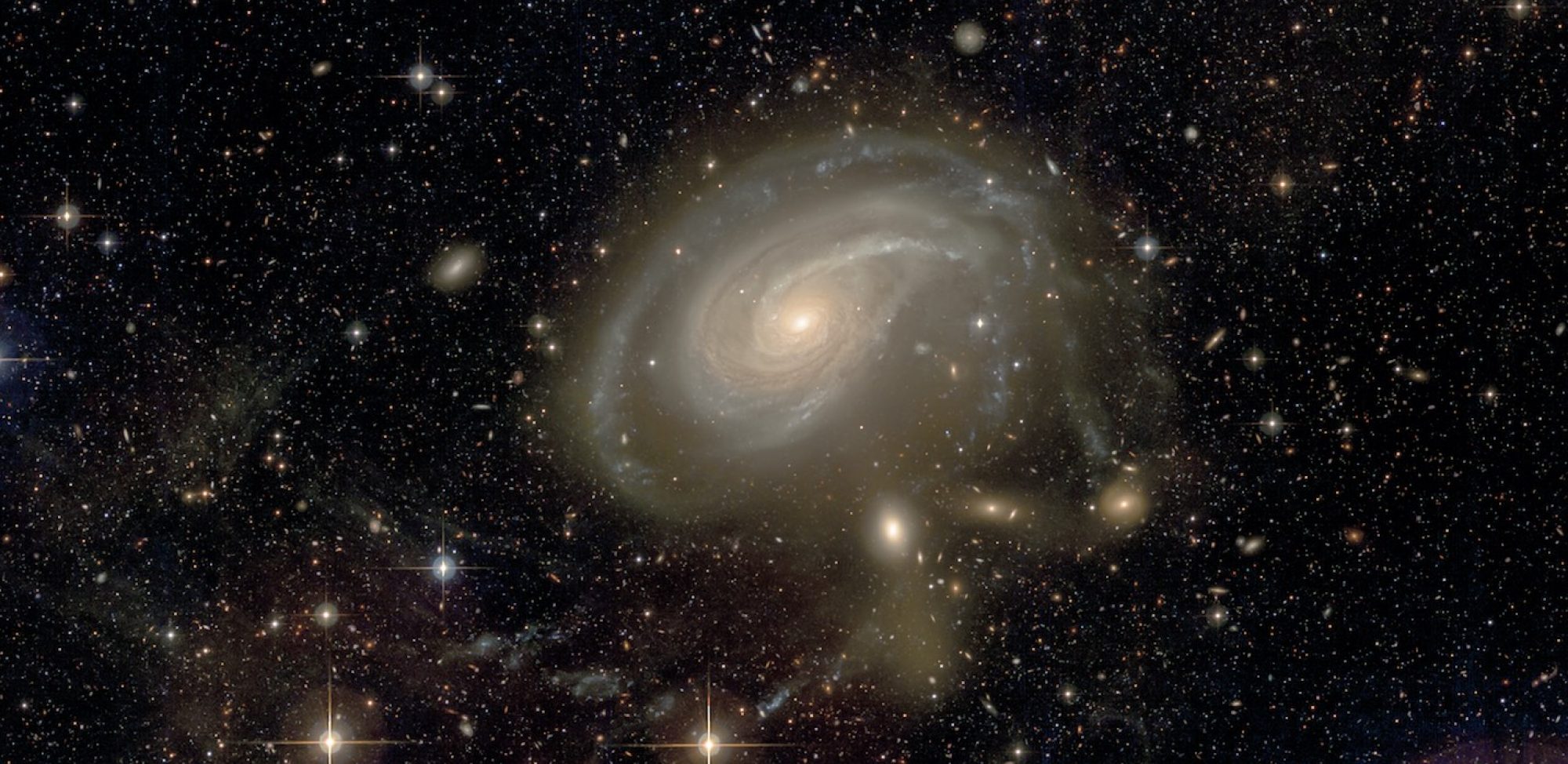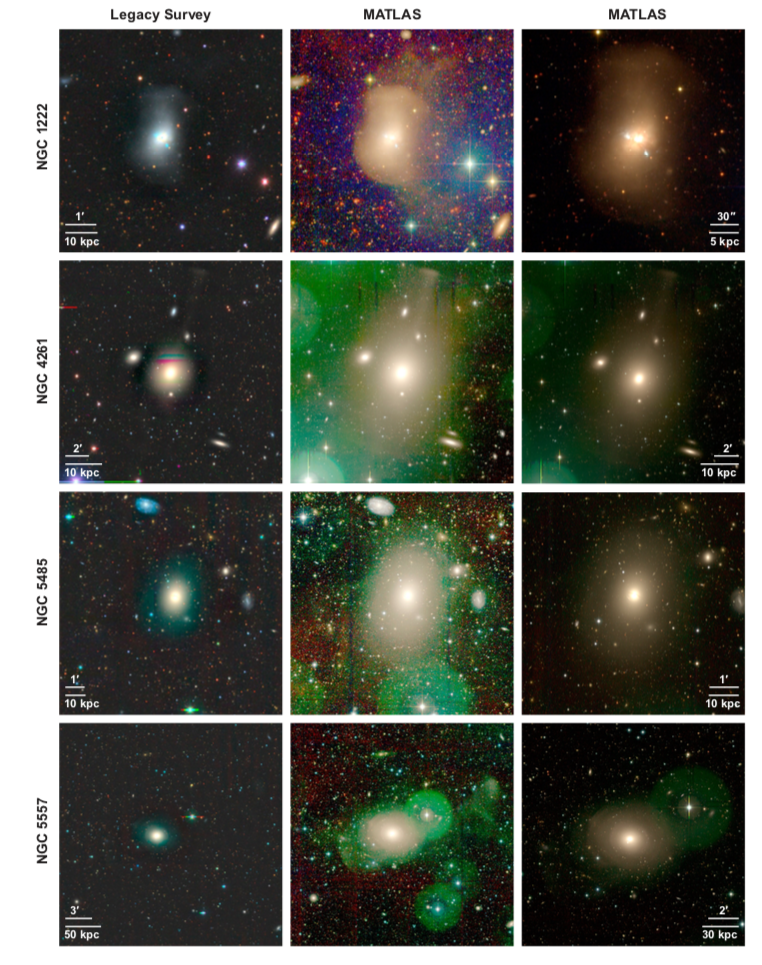
We present a photometric study of the dwarf galaxy population in the low to moderate density environments of the MATLAS deep imaging survey. The sample consists of 2210 dwarfs, including 508 nucleated. We define a nucleus as a compact source that is close to the galaxy photocenter (within 0.5 ReRe) which is also the brightest such source within the galaxy’s effective radius. The morphological analysis is performed using a two-dimensional surface brightness profile modeling on the g-band images of both the galaxies and nuclei.
Continue reading “Structure and morphology of the MATLAS dwarf galaxies and their central nuclei”





